Melanistic masks are caused by Em, the dominant allele at the E-Locus. Here we take a look at the different variations and the genetics of melanistic masks in dogs.
Content
What is a Melanistic Mask?
The Em allele at the E-Locus causes a mask of eumelanin on or beyond the muzzle and face of a dog. These (eu)melanistic masks can stay very small or can get very large and even cause heavy shading on other parts of the dog’s body like ears, chest, legs, back and tail.
The mask will have the color of eumelanin a dog can produce, so will be either black, brown, blue or lilac. Melanistic Masks are only visible on top of the yellow or red areas in the coat of clear sable, shaded sable, agouti, saddle patterned or tan pointed dogs.


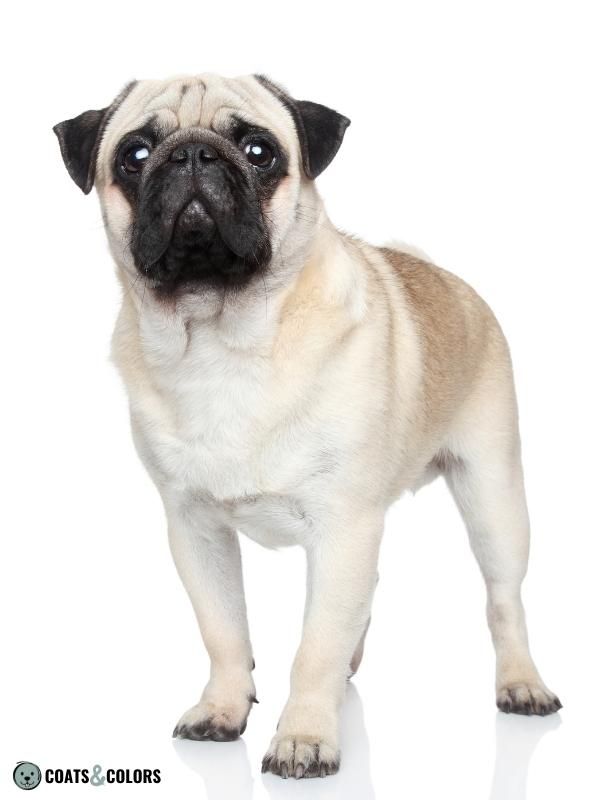
The Em-Allele
The Extension-Locus is part of the pigment type switching system. Different variants at this gene locus cause different amounts of eumelanin in the coat.
Emask or short Em is the dominant allele in this series and is responsible for a melanistic mask.
Em is an autosomal dominant trait. One copy of Em is enough to produce a melanistic muzzle phenotype[1].
Many dog breeds like Pug, Boxer, Cairn Terrier, Skye Terrier, Border Terrier, Keeshond, Deerhound, Cane Corso, Belgian Shepherd Dogs or German Shepherd Dogs have a very high allele frequency of Em or are even fixed for Em/Em[2].
Dogs with an Em/- genotype can be carriers of any of the other alleles at this locus (Em/E, Em/eA, Em/eG, Em/eH or Em/e). A dog that is homozygous for a melanistic mask (Em/Em) can only produce masked puppies.
Having an Em allele is a pretty reliable predictor for a dog to express a dark face mask.
But there are some known cases of dogs that test as Em/- but don’t have a melanistic mask or of some masked dogs that don’t test as Em/-. So there is more to discover that we do not just yet understand about dark face masks in dogs.
When will a dog be masked?
To have a visible dark mask a dog has to be able to express his A-Locus pattern. So he has to be kbr/kbr, kbr/ky or ky/ky at the K-Locus. Masks are only visible “on top” of clear sable, shaded sable, agouti, a saddle or tan point pattern (each with or without brindle).
But even if Em is present the masking is not always visible in all coat color patterns.
- A black mask is not visible on a white dog or a dog with too much head white.
Example: Many Bull Terrier and Dogo Argentino seem to be Em/-, but due to white spotting or even extreme piebaldism (sp/sp) the lack of pigment in the coat often prevents the mask phenotype[2].
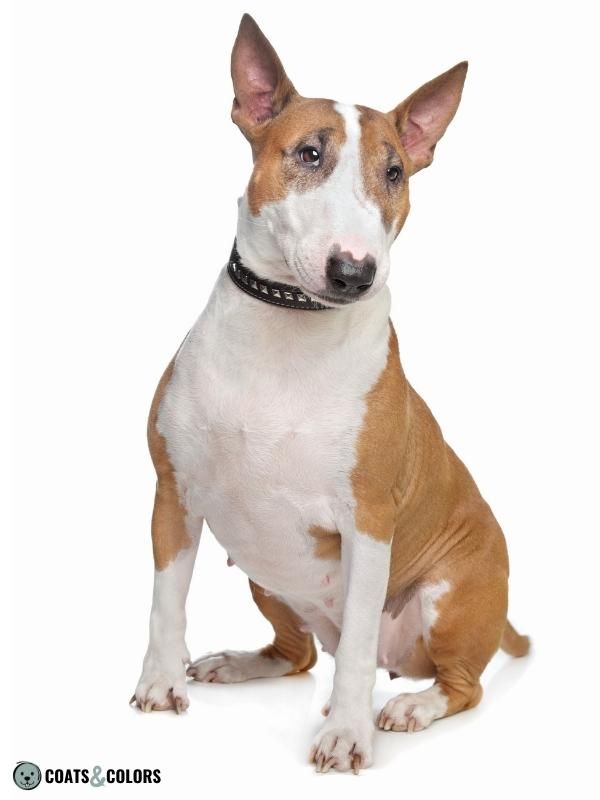
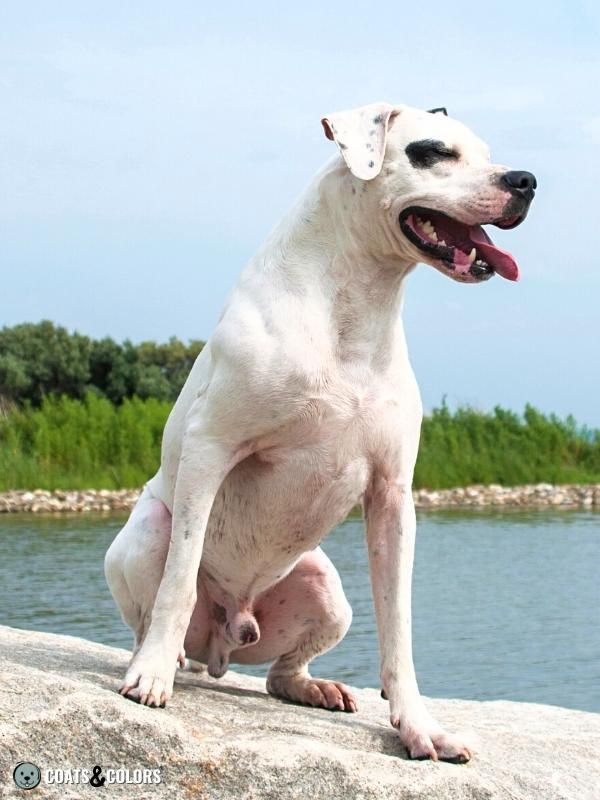
- A black mask is also not visible on a solid black dog (same goes for a blue mask on a blue dog, a brown mask on a brown dog or a lilac mask on a lilac dog).
Example: Masks are present in the genotype, but not visible on the solid black color variety in breeds like German Shepherd Dog or Pug!
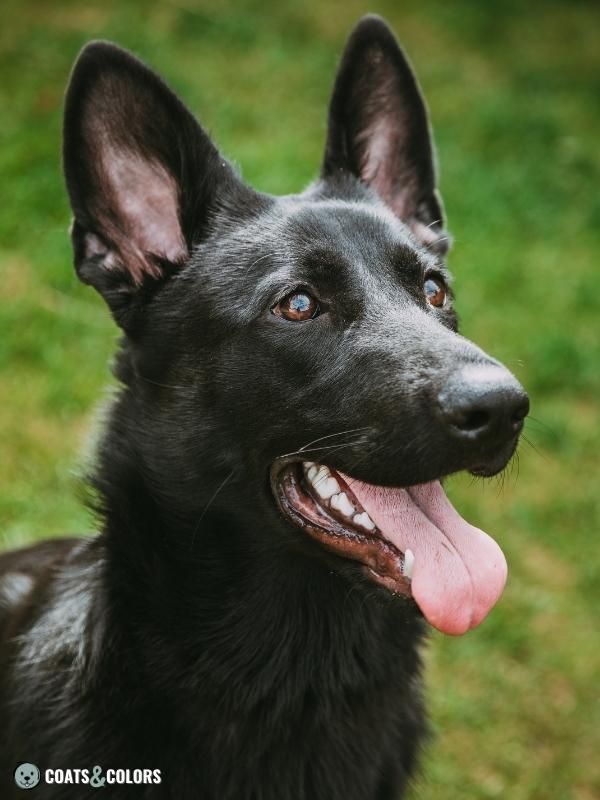

So for a melanistic mask to be fully visible the dog can’t be dominant black (KB/-), recessive black (aa) or have too extreme white spotting (sp/sp, Whitehead).
Variability of Melanistic Masks
How a mask will look depends on its size, its color and the basic pattern of the dog.
Size Variation
On average masks cover the dog’s muzzle and extend into the region around the eyes, the forehead up to the ears. But masks vary greatly in size and we know of a wide range of possible expressions.
In many breeds, the desired dimensions of a dark face mask are described in detail in the official breed standard. Too large or too small masks are selected against and purebred dogs of certain breeds often have a somewhat uniform mask phenotype.

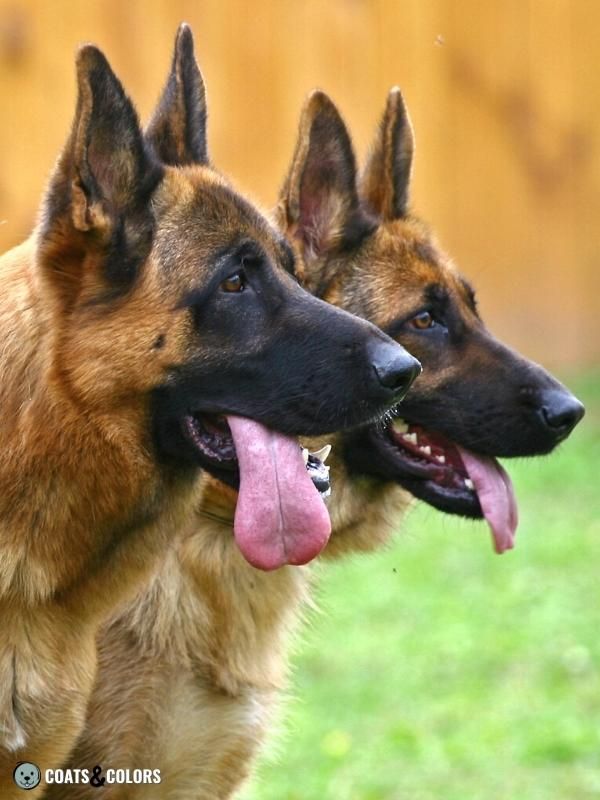
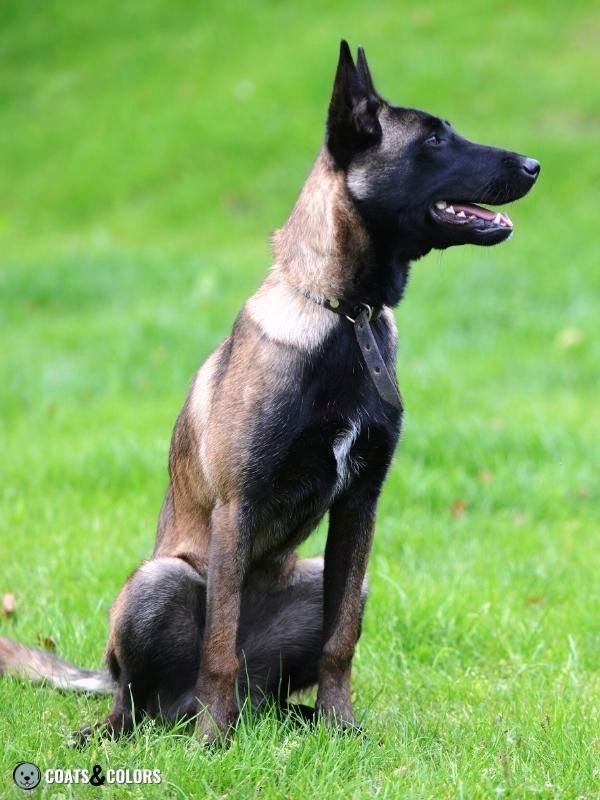
Melanistic masks can also be very minimal and barely cover the end of a dog’s muzzle or the corner of the mouth.
On the other hand, masks can also extend and cause heavy dark shading on the chest, legs, back or tail. This often happens in shaded sable dogs (Ays) where a melanistic mask seems to intensify the dark shading these dogs already have.
But not all sables express more shading than usual simply because they have a mask. There are plenty of examples of masks on very much clear sable dogs like Pugs, Briards, Great Danes, Rhodesian Ridgebacks, Bullmastiffs, Boxers or Mastiffs.
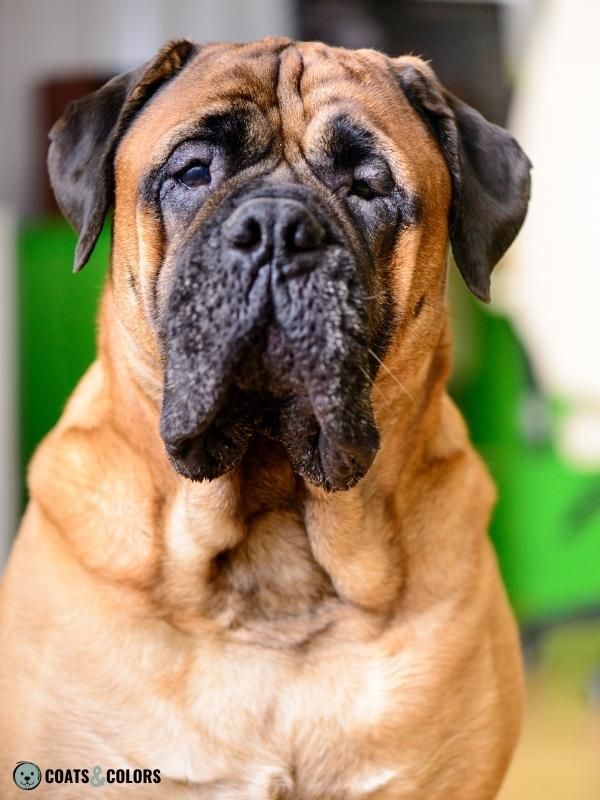


Dogs with extreme masks sometimes even have more shading on their underside (e.g. chest, belly, inside of the legs) than on their back where you would expect it in a sable dog.
Dogs with extended black masks can be found in breeds like Belgian Malinois, Bavarian Mountain Hound, Leonbergers or American Akita. But this really happens in a lot of breeds.
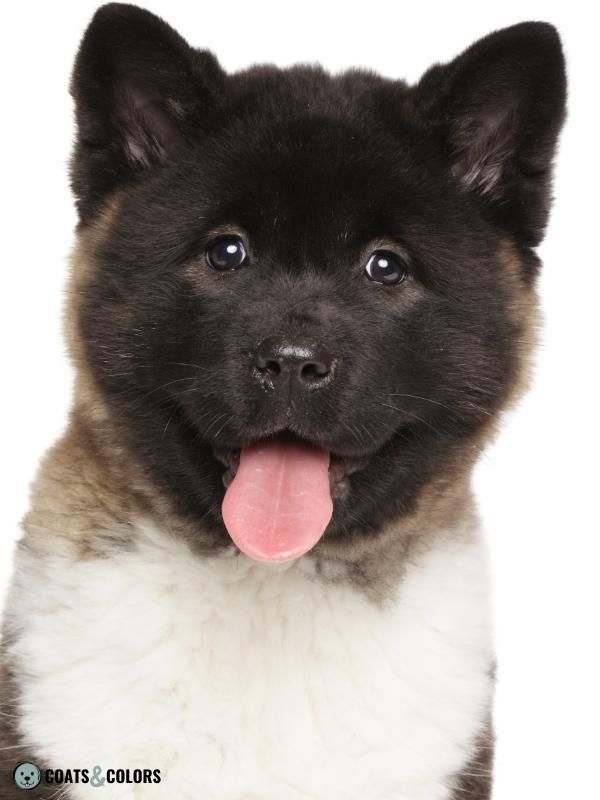
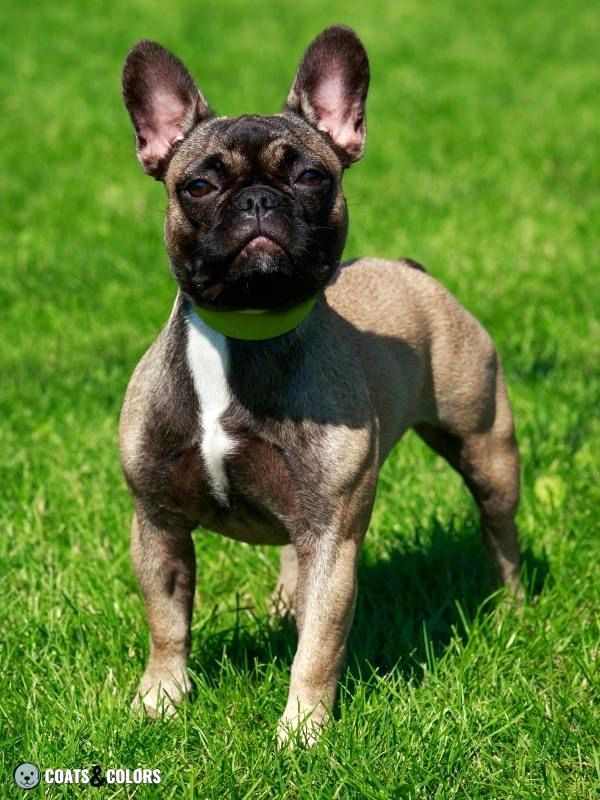
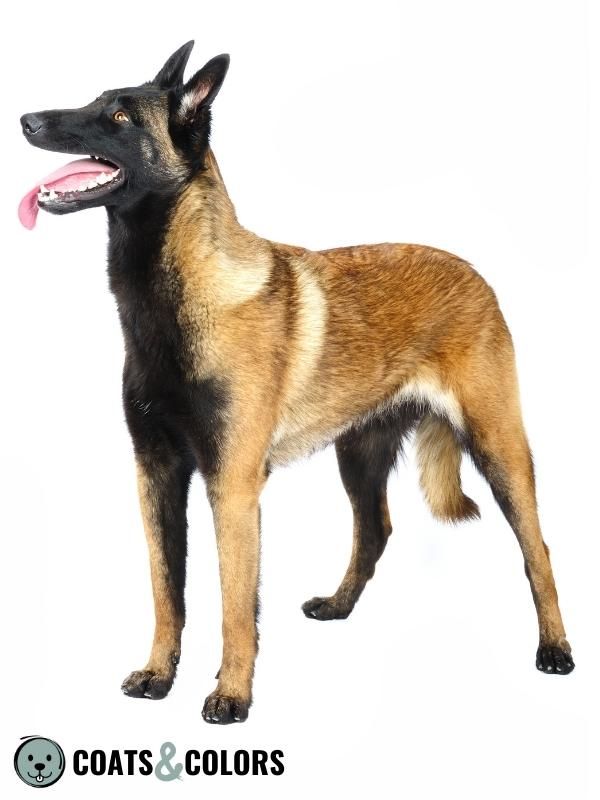
Color of Melanistic Masks
Since the melanistic mask has the same color as the rest of a dog’s eumelanin it can be black, brown, blue or lilac. The color of a dog’s eumelanin is caused by alleles at the B-Locus and D-Locus.
Since the shade of the yellow pigment in patterned dogs can also vary from white to red there are many possible combinations, e.g. a blue mask on a red coat or a brown mask on a golden coat. While black masks are spotted easily not all combinations are rich enough, in contrast, to make the mask clearly visible.
Black Melanistic Masks
Black is the normal pigment color of eumelanin and the only acceptable pigment color in many breeds. In order to have black pigment, a dog has to be B/- at the B-Locus and D/- at the D-Locus.


Brown Melanistic Masks
To express brown eumelanin a dog has to be bb at the B-Locus and D/- at the D-Locus.
Brown masks can be seen in some Rhodesian Ridgebacks and many Dogue de Bordeaux, but are not always visible on an orange-red base color. In a combination with ivory or yellow coat, the contrast between sable coat and brown mask can be seen way better.

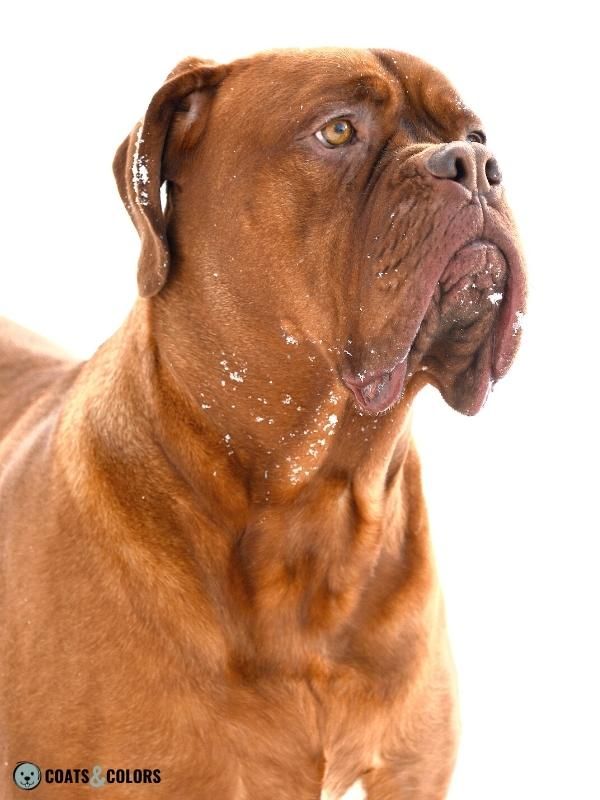
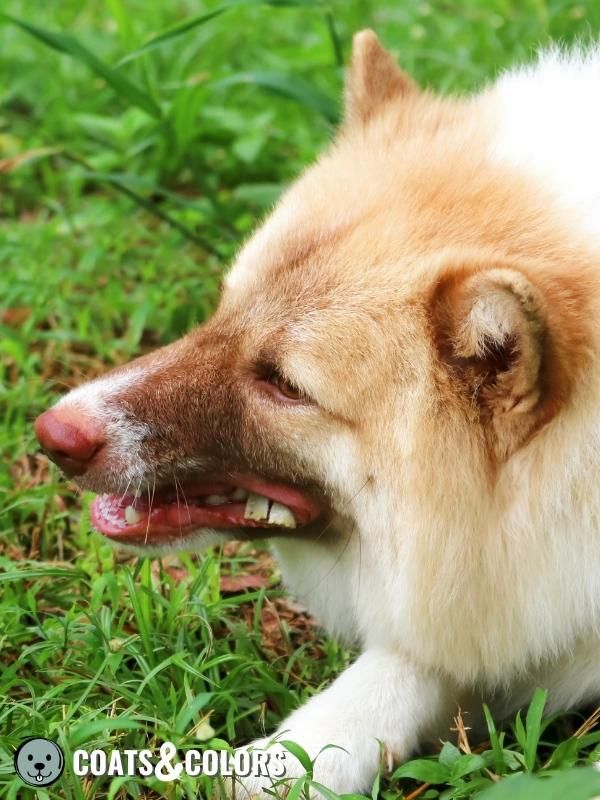
Blue Melanistic Masks
A combination of black pigment B/b at the B-Locus and color dilution d/d at the D-Locus cause blue eumelanin. Not only the melanistic mask will turn blue, color dilution also causes the hair tips in the sable coat to turn blue. This often decreases the already low contrast between a sable coat and mask.
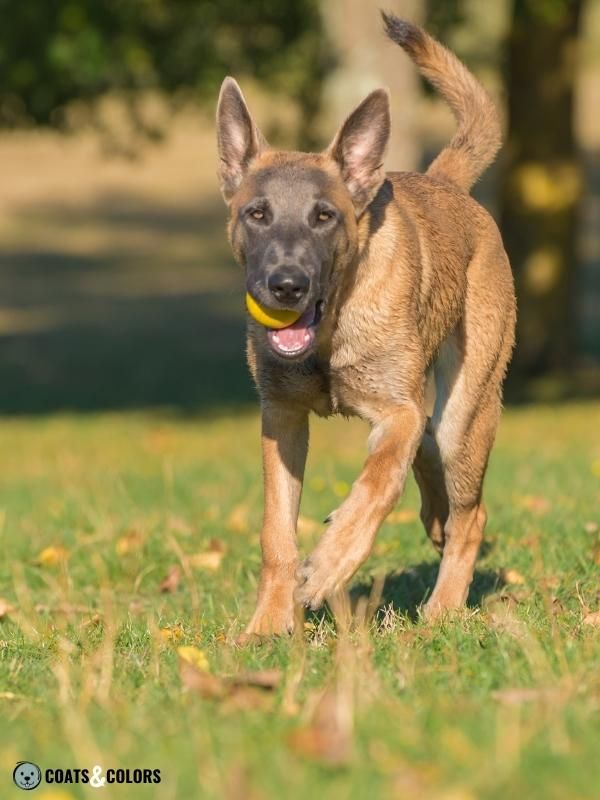
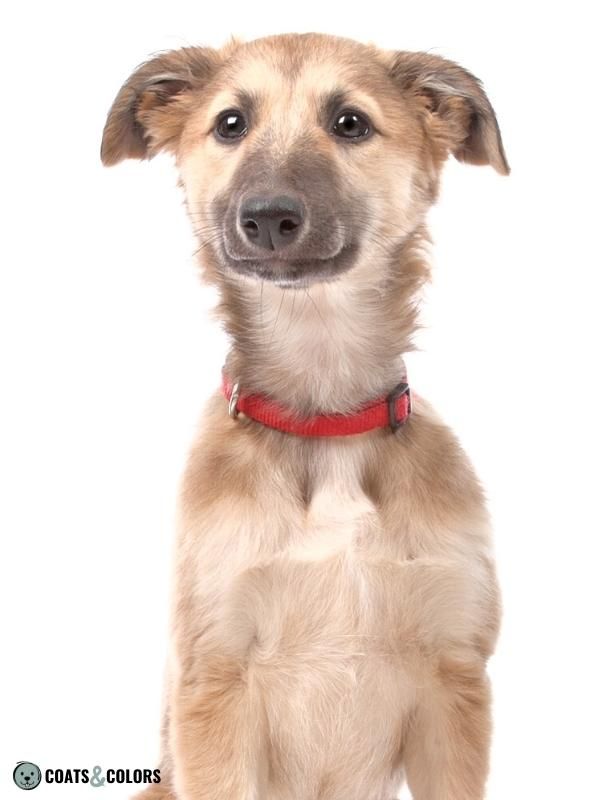
Lilac Melanistic Masks
Lilac (or: Isabella) is a rare combination of the two homozygous recessive genotypes b/b at the B-Locus and d/d at the D-Locus. Lilac is diluted brown pigment that can look mouse gray or beige and even in combination with a mask is often barely visible on a yellow coat.
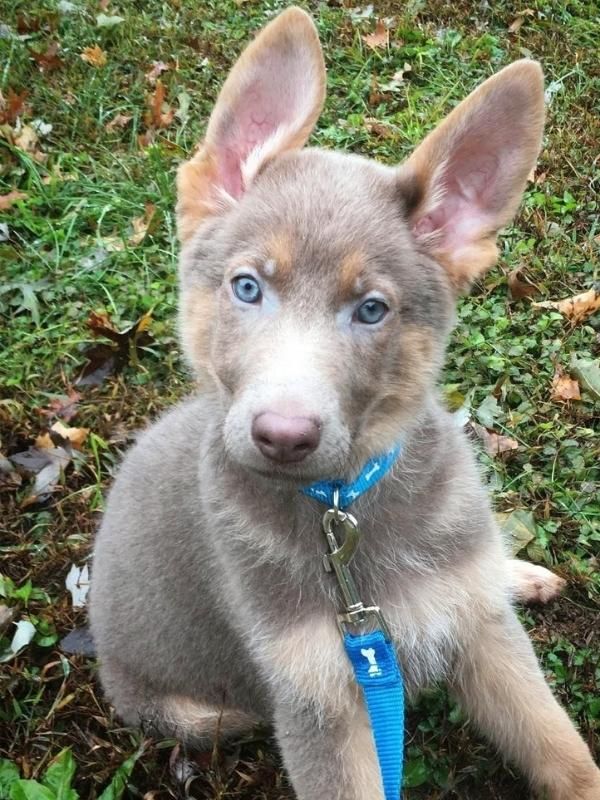
Melanistic Masks and Agouti
Agouti (ky/ky aw/- or kbr/- aw/-) produces a coat with banded hair. Masked agouti can be found in many German Shepherd Dogs (agouti is called sable in this breed!) or livestock guardian breeds like Caucasian Shepherd Dogs.


Melanistic Masks and Tan Points
Since the melanistic masks present themselves “on top” of the pattern caused by the Agouti-Locus it can cover some or most of the tan markings a dog with a ky/ky at/- or kbr/- at/- genotype typically has.
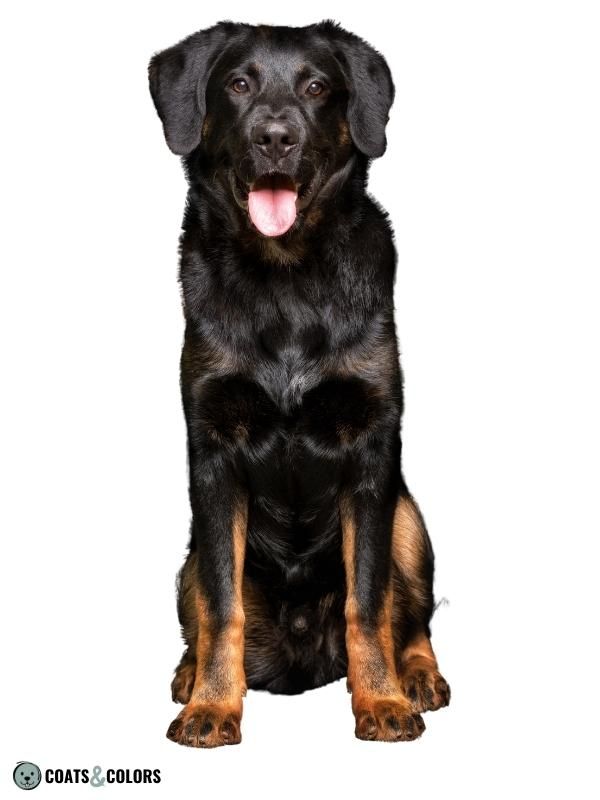

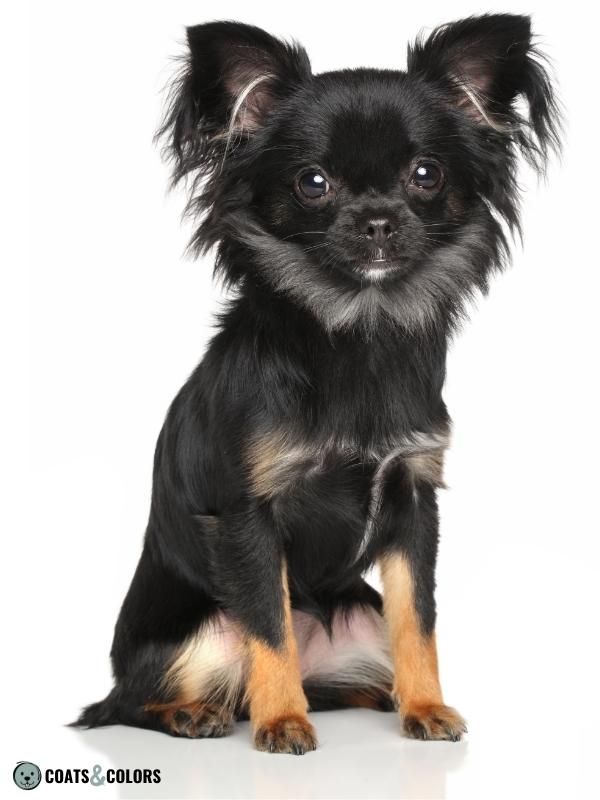
Melanistic Masks and Saddle Pattern
A masked dog with a saddle pattern will have eumelanin on his back and on his muzzle. This is a common pattern in many black and tan German Shepherd Dogs.
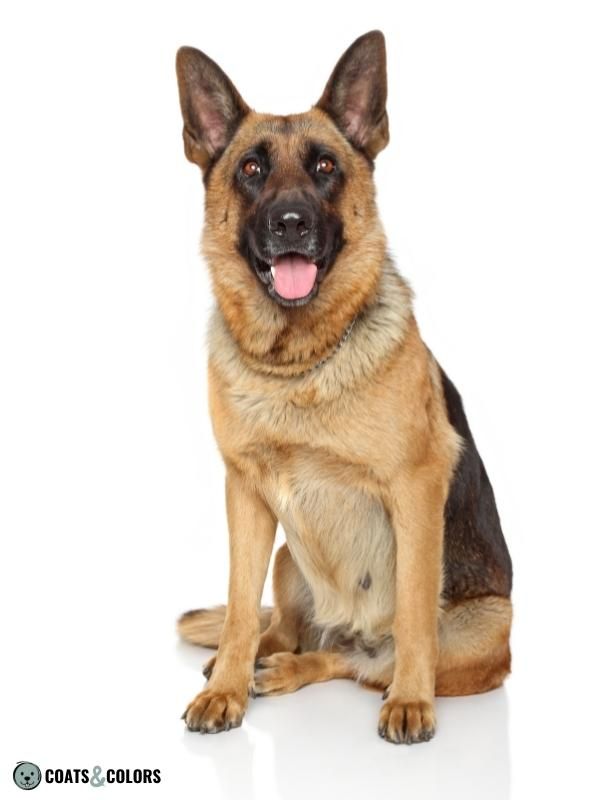
Melanistic Masks and Brindle
Brindle can only be expressed on sable, agouti, saddle pattern or tan points.
All these coat patterns can additionally have a melanistic mask. This is a common color combination in breeds like Boxer, Dutch Shepherd, Mastiff or French Bulldog.

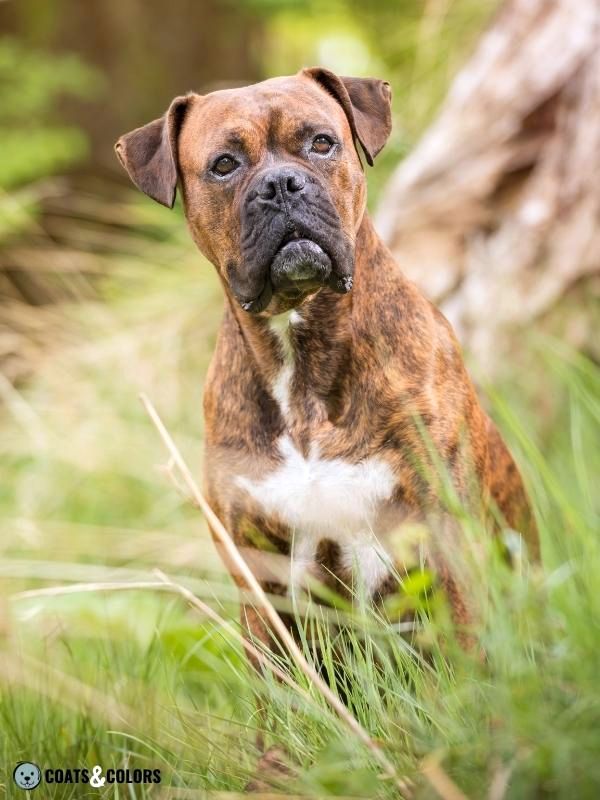

Melanistic Masks and White Spotting
White markings on the face (from Irish spotting, piebald or whitehead) can hide a melanistic mask. Sometimes we can still see the outer borders of the mask, but the mask can be completely hidden in dogs with extended head white.
If the dog shows ticking or roan the white spotting on the muzzle might show some of the original coloration had the dog not been white.
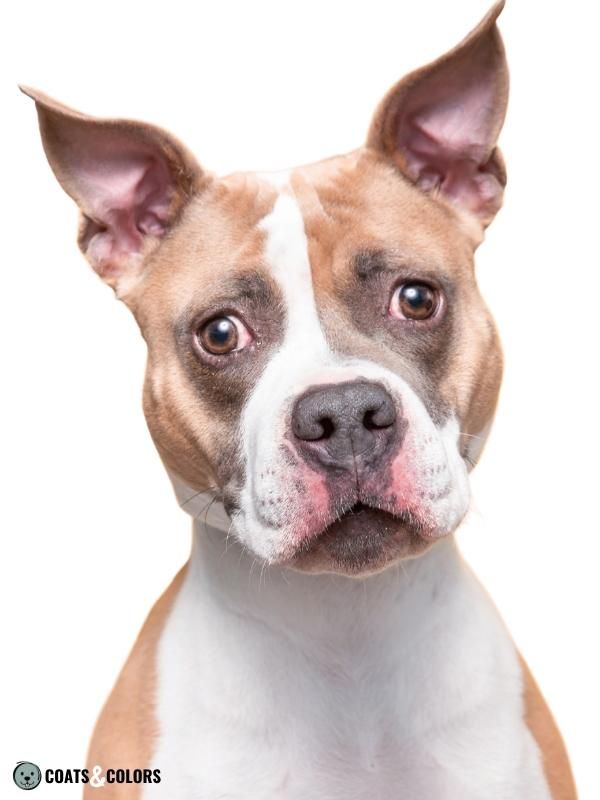
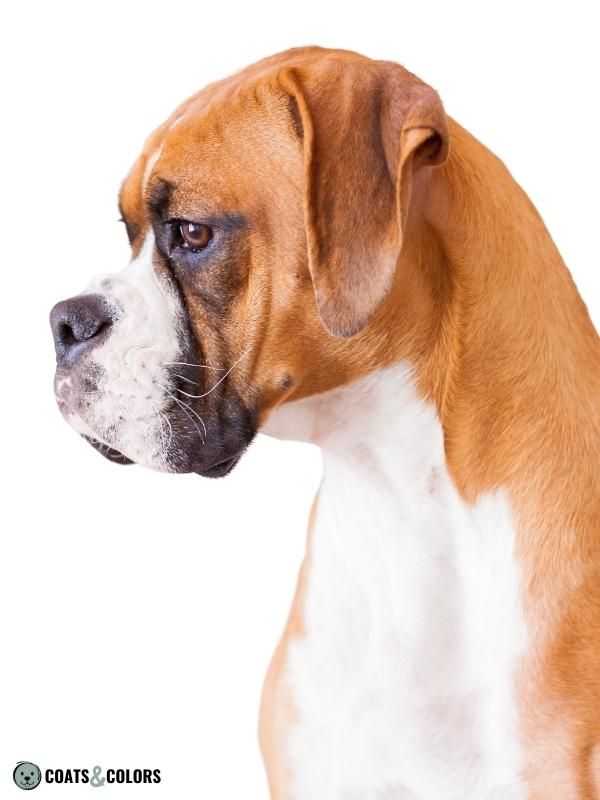


Watermarking
In some dogs with a sable coat, white spotting and an extended melanistic mask we can observe distinct eumelanin borders along the fringe of the sable patches. This effect is called Etching or Watermarking. But the reason behind this curious pattern is unknown.
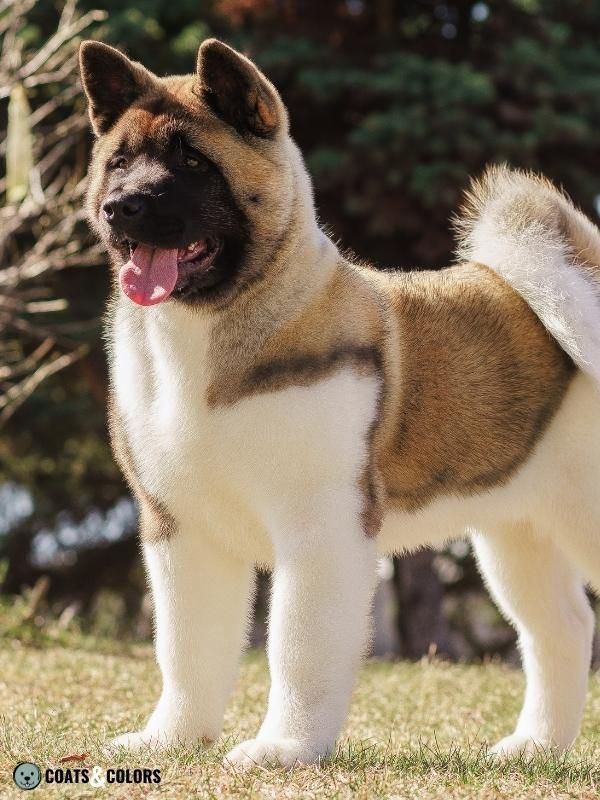
Melanistic Masks and Merle
Merle dilutes some of the eumelanin in a dog’s coat and causes a somewhat random pattern of diluted and fully pigmented patches. Merle will also dilute the eumelanin in a melanistic mask.
Sometimes the dog has a merled patch on his muzzle which can look quite intriguing. But sometimes the pigment deletion can get to the point where the yellow pigment covered by the mask can start to bleed through and the mask is barely visible anymore.
If a dog has darker patches or a splotchy pattern on top of the tan-colored coat on his muzzle he likely had a mask that got cleared by some kind of merle pattern.
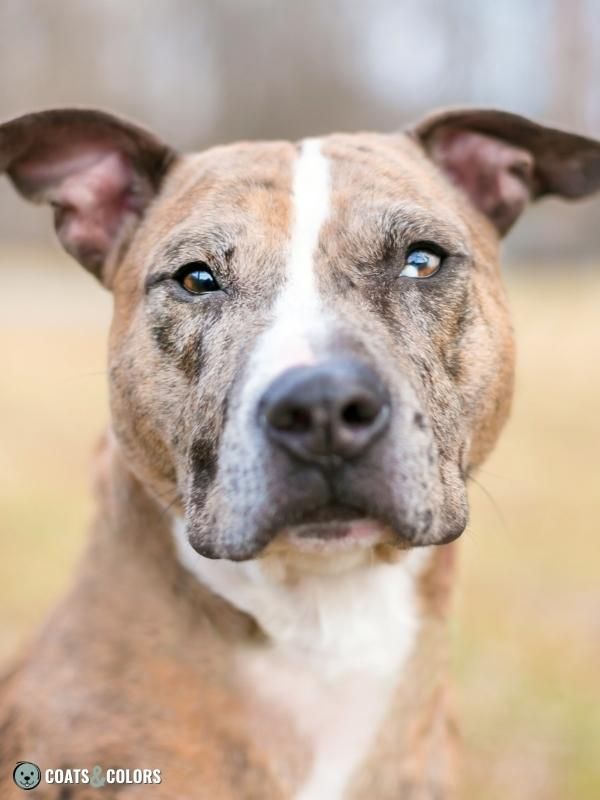
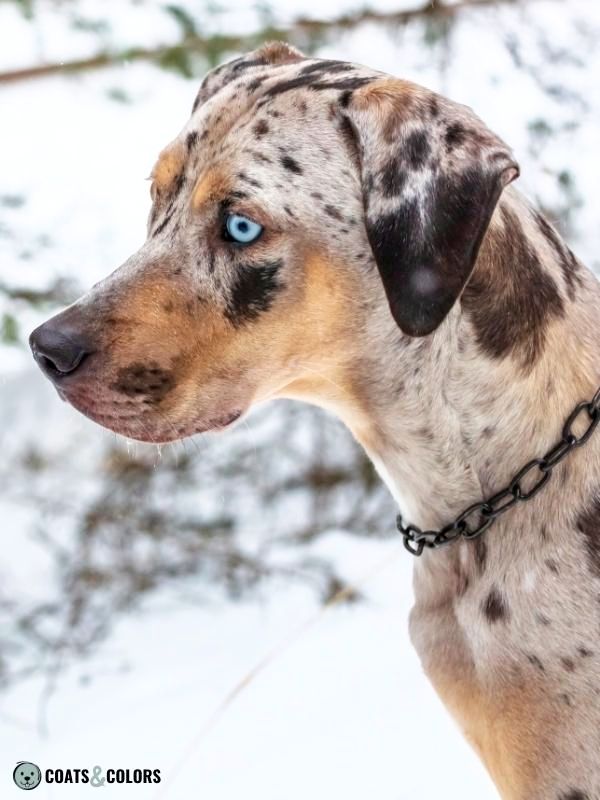
Melanistic Masks and Progressive Greying
In some dogs that express progressive greying, the mask seems to not be affected to the same degree as the rest of the eumelanin in a dog’s coat. This leaves a darker mask on a faded grey or beige coat.
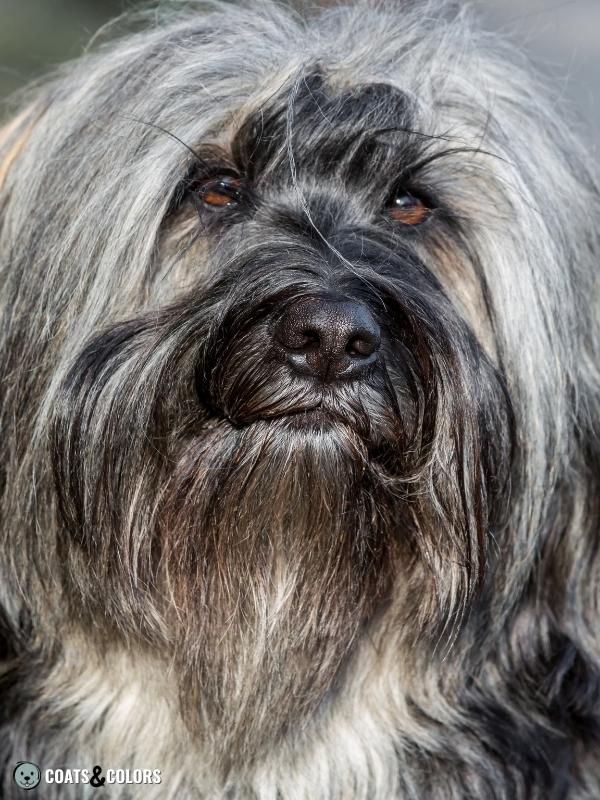
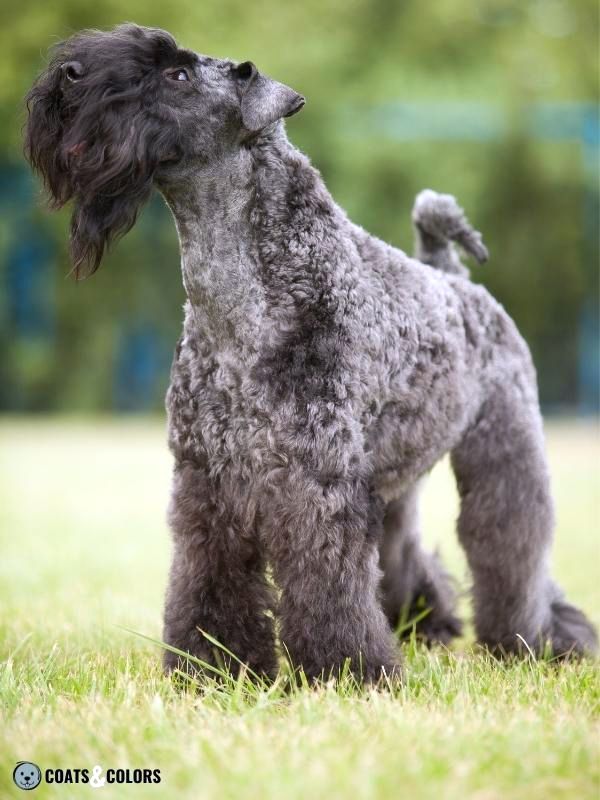
Dog Breeds with Melanistic Masks
The Em allele occurs in many dog breeds and many of them are able to express a mask phenotype[2]. Here are some examples:
- Afghan Hound
- American Akita
- American Bulldog
- American Foxhound
- American Staffordshire Terrier
- Anatolian Shepherd Dog
- Australian Cattle Dog
- Australian Shepherd
- Azawakh
- Belgian Malinois
- Belgian Tervuren
- Bloodhound
- Boerboel
- Border Collie
- Border Terrier
- Borzoi
- Boxer
- Briard
- Bullmastiff
- Cairn Terrier
- Cane Corso
- Catahoula Leopard Dog
- Caucasian Shepherd
- Central Asian Shepherd Dog
- Chihuahua
- Dogue de Bordeaux
- Eurasier
- French Bulldog
- German Shepherd Dog
- Great Dane
- Greyhound
- Irish Wolfhound
- Italian Greyhound
- Keeshond
- Lhasa Apso
- Löwchen
- Mastiff
- Norwegian Elkhound
- Papillon
- Pekingese
- Pomeranian
- Presa Canario
- Pug
- Pyrenean Shepherd
- Rhodesian Ridgeback
- Saluki
- Scottish Deerhound
- Shar Pei
- Shih Tzu
- Skye Terrier
- Sloughi
- Smooth Fox Terrier
- Tibetan Mastiff
- Tibetan Terrier
- Whippet
Melanistic Mask Look-Alikes
These patterns are not caused by a melanistic mask or the Em allele:
- Seal often causes a a bronze-colored or reddish tinge in the coat with normal pigment production along the dark dorsal stripe and face sometimes resembling a dark mask.
- Some white dogs seem to have a mask because the dark skin on the muzzle shines through the thin coat around the snout. Tis is often seen in brachycephalic dog breeds.
- Puppies often have a greyish or dark masks that fades never to return. These puppy masks often clear in the first few weeks or months of living and are not related to Em.
- Other patterns than Em melanistic masks are sometimes called “masks“. The light open face pattern in domino-patterned Huskies (see northern domino) or Sighthounds (see grizzle domino) is often called a facial mask. And German Shepherd Dogs without the typical mask are sometimes said to have a reverse mask.
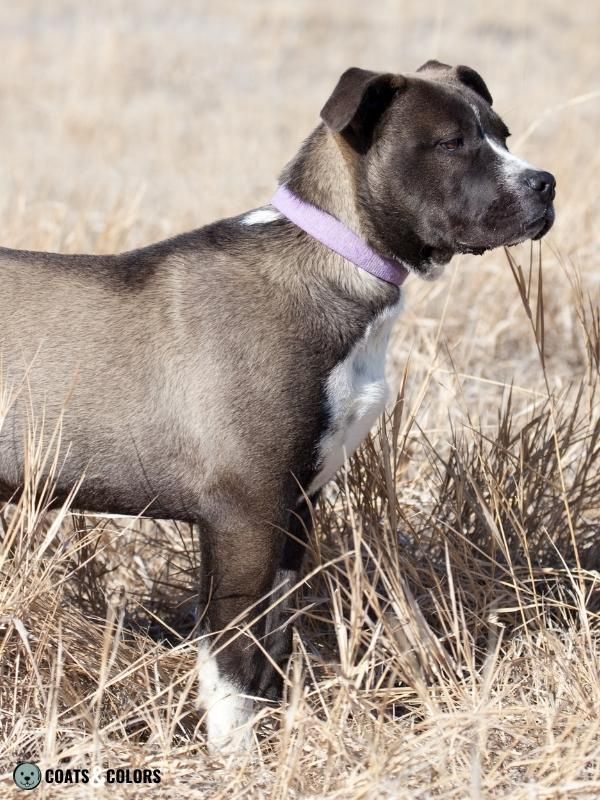
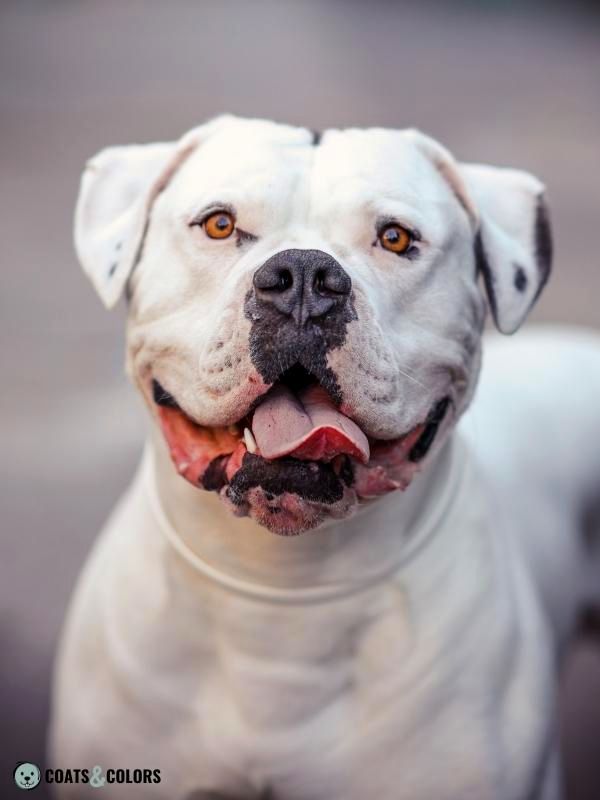
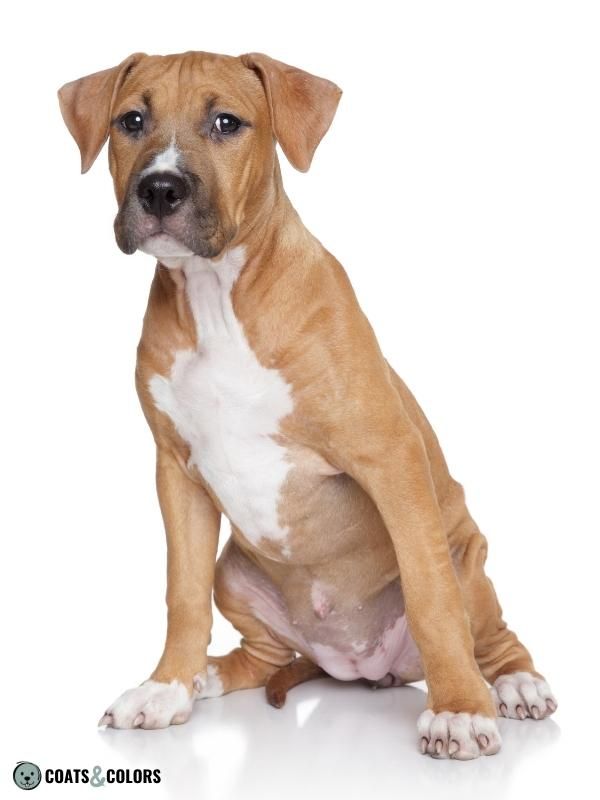
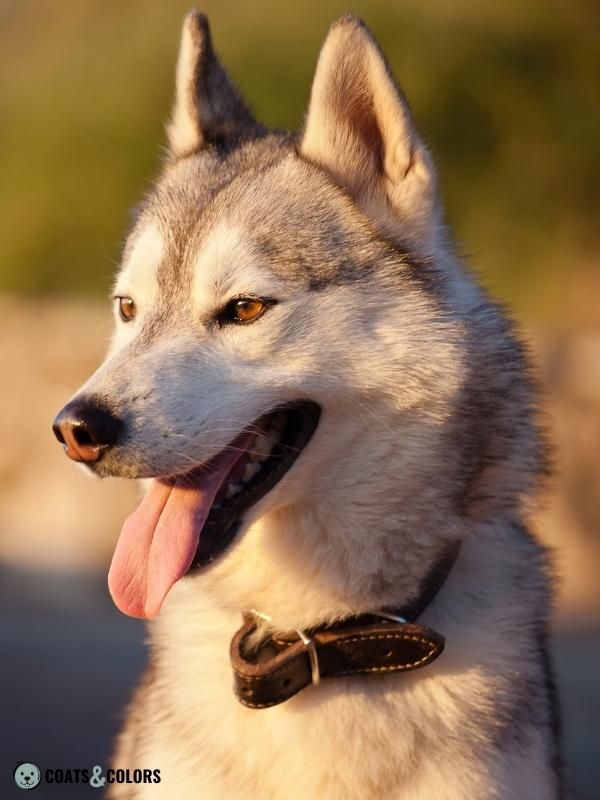
Learn More
Links
[1] Schmutz SM, Berryere TG, Ellinwood NM, Kerns JA, Barsh GS. MC1R studies in dogs with melanistic mask or brindle patterns. J Hered. 2003 Jan-Feb;94(1):69-73. PMID: 12692165. DOI: https://doi.org/10.1093/jhered/esg014
[2] Dreger DL, Hooser BN, Hughes AM, Ganesan B, Donner J, Anderson H, et al. (2019). True Colors: Commercially-acquired morphological genotypes reveal hidden allele variation among dog breeds, informing both trait ancestry and breed potential. PLoS ONE 14(10): e0223995. https://doi.org/10.1371/journal.pone.0223995

Hi! I’m Steffi. I am a biologist and a big time dog nerd. You are curious about coat color genetics? You’ve come to the right place! Read more.

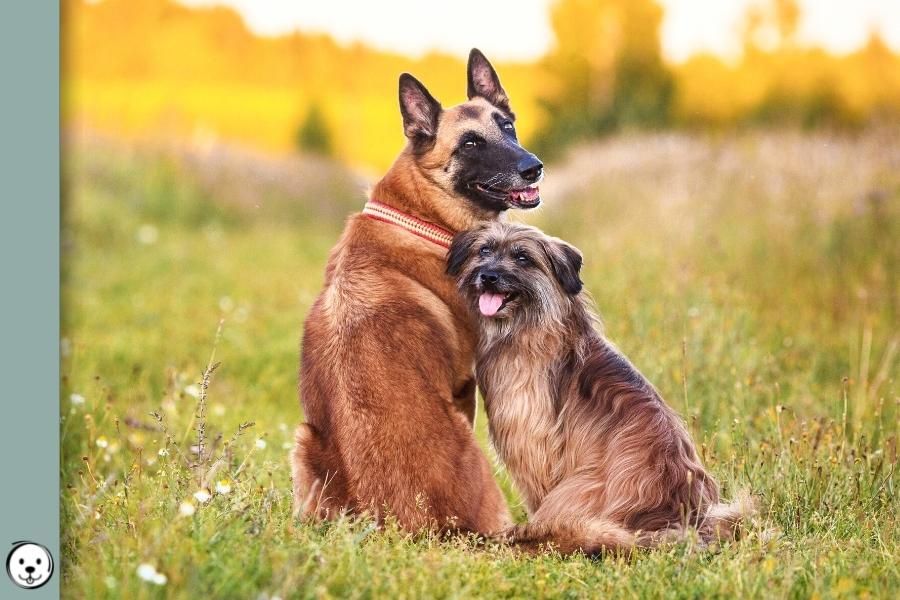


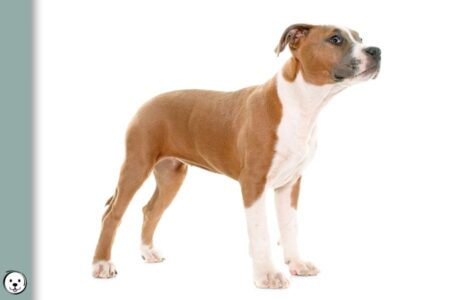

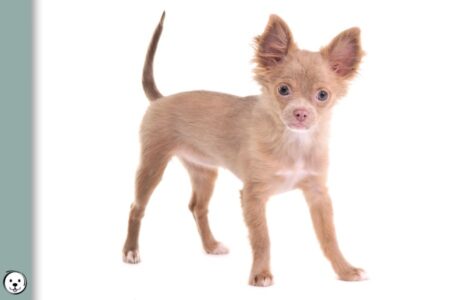

2 thoughts on “Melanistic Masks (E<sup>m</sup>)”
Comments are closed.